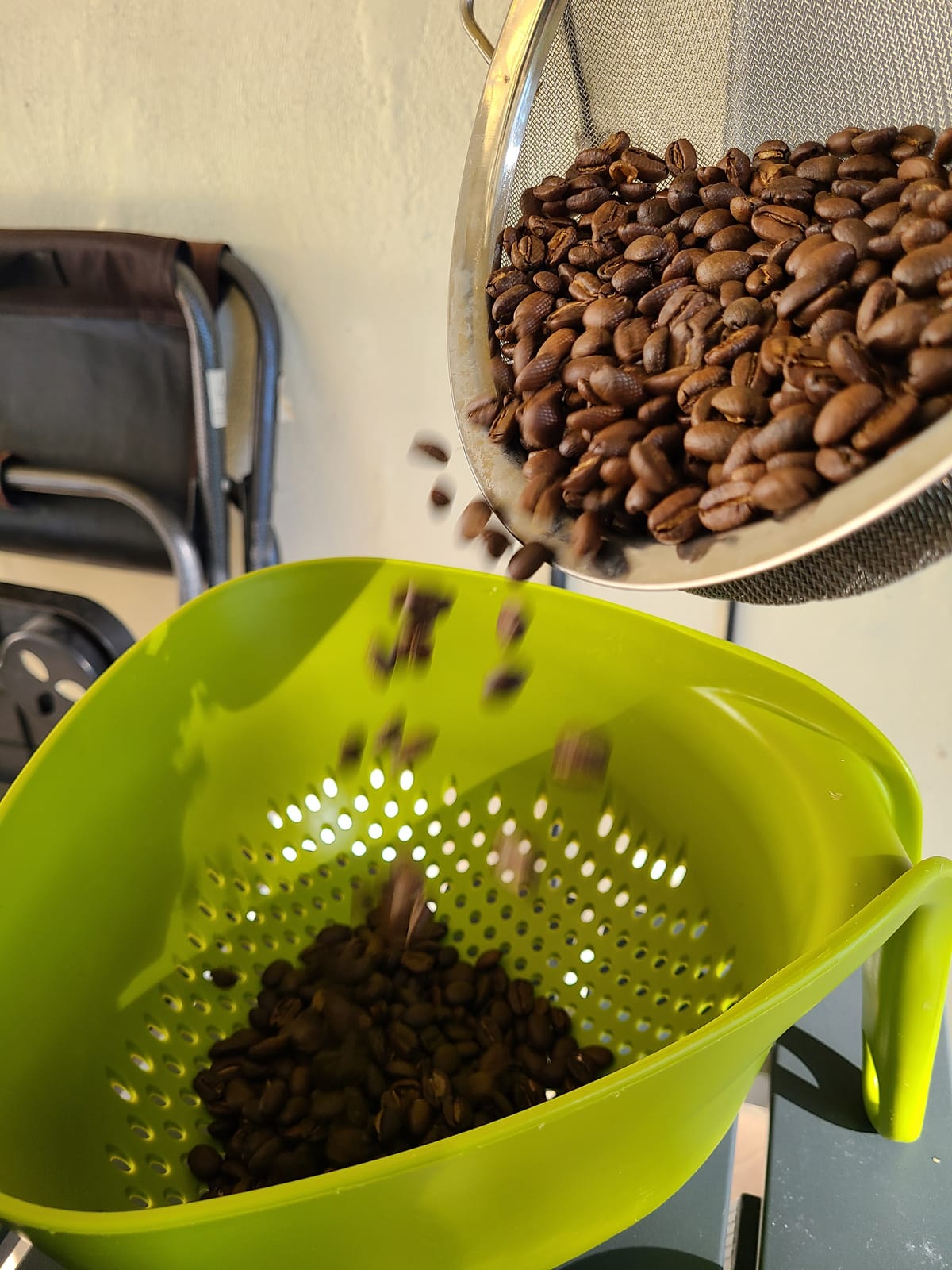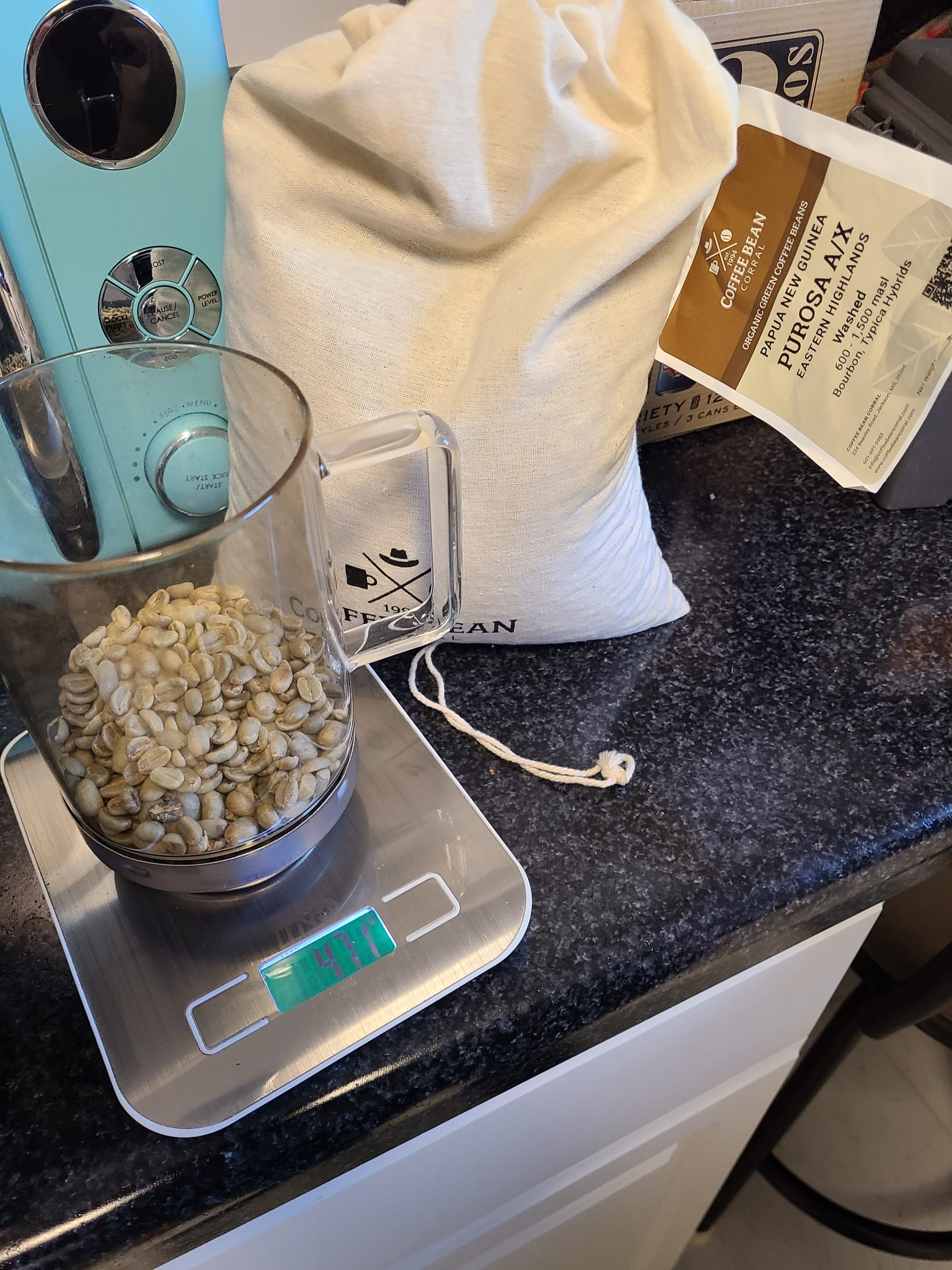Home Coffee Roasters’ Top 10 Mistakes and How to Fix Them
Discover the most common home coffee roasting mistakes and learn expert solutions to improve your roasts. Master temperature control, timing, and bean selection for perfect results.

Learning roasting, like most skills, often starts off with lots of mistakes. You roast inside and set off the smoke alarms. The coffee tastes of charcoal (because it probably is) rather than a dark chocolatey roast. That attempted blond roast is as hard as pea gravel and crack your grinder.
Those are among some of the mistakes I’ve made since I started roasting coffee at home in 2020. But here's the good news: you can be smart and learn from my, and these other, completely avoidable and coming mistakes when you roast.
1. Temperature Control Mistakes
Roasting too fast:
"Faster must be better" is one of the biggest mistakes we make when we start roasting: you rush the roast, and the beans end up looking chocolatey, but really it’s burnt crispy on the outside but underdeveloped on the inside.
The Fix: Start with a lower temperature (around 350°F/175°C) and gradually increase it (up to 390°F / 199°C) over the first 7 minutes and continue to raise the temperature slowly. The rule of thumb is that your total roast time should be between 8-12 minutes, but what’s important is that you’re raising the temperature slowly and paying attention for the first “cracks” of the beans. Use the "low and slow" method - it's better to take your time than to rush and ruin a batch.
Inconsistent Heat Application
Another common issue is temperature fluctuation during the roast. Consistent temperature (and its control) is critical for a good roast, and the easiest way to screw that up is to keep opening up the roaster / repeatedly pulling out the sampler to check the color of the roast/ or if you’re using an air roaster, raising the temperature too rapidly and trying to lower the temperature. (I make this mistake if I’m not paying attention).
The Fix:
- Invest in a good thermometer if your roaster doesn’t have one. If you’re roasting on a pan, then use an infrared thermometer like one of these.
- Maintain steady gas/power settings: start low and raise the temp slowly.
- Avoid opening the roaster during the process.
- Consider ambient temperature. This is a big deal if you roast outside like me. If you’re roasting outside, like I do, colder temperatures will require you to adjust your settings drastically.
- Pay Attention: listen carefully! (How long you roast will always depend on the first crack).
Not Preheating Your Roaster
This one's crucial! Skipping the preheat for most roasters is like trying to cook in a cold oven - it throws off your entire timing. (This is not true for air roasters).
The Fix: Always preheat your roaster for 5-10 minutes before adding beans, as recommended by your roaster’s instruction guide. If you’re using the oven or a skillet, aim for a starting temperature of about 300°F (149°C), which drops appropriately when I add the room-temperature beans.
2. Bean Selection and Storage Errors
Beans can get pricy, especially if you buy in large batches. There’s nothing worse than letting your beans go to waste.
Using Old or Poorly Stored Green Beans
Green coffee isn't immortal, despite what some people think. They’ll absorb moisture. They can completely dry out and get stale and won’t crack when you roast them.
The Fix:
- Store green beans in a cool, dry place, not under your sink or in a moldy basement.
- Use airtight containers with one-way valves
- Buy only what you can use within 6-12 months (or less).
- Check beans for mold or unusual odors before roasting
Starting with Too Many or Too Few Beans
There's a sweet spot for batch size, and it varies by roaster. I once tried to roast a big batch in my SR800 and ended up burning the outside of the beans while the inside was still hard enough to break a coffee grinder.
The Fix:
- Follow your roaster's recommended batch size
- For beginners: start with smaller batches (100-200g)
- Document successful batch sizes
- Consider bean density when measuring

3. Timing and Development Issues
This section is crucial - timing is everything in coffee roasting. It's like cooking a steak; you need to know the signs of proper development.
Rushing Through the Roasting Stages
Newcomers rush through the crucial color changes. Each stage needs its time to develop the complex flavors we love in coffee.
The Fix:
- Allow 8-12 minutes for a full roast
- Watch for color changes (green to yellow to brown)
- Listen for first crack (sounds like popcorn!)
- Give beans 1-2 minutes of development after first crack
- TIP: The development and roast level is usually in relation with the time roasting after the first crack. A very light, ‘blonde’ roast would be to start the cooling process once the first crack (is heard, allowing the beans to crack during the cooling process). A typical light roast is to cool after the majority of first crack is done. “City Roast” is about a minute after the first crack has basically finished (except for the few stragglers) and darker and darker with more time and rising temperature.
Missing First Crack
Missing the first crack is like missing your exit on the highway - you'll end up somewhere, but probably not where you wanted to be!
The Fix:
- Reduce background noise during roasting
- Learn to identify the approaching signs (aroma changes, color darkening from yellow to brown)
- Keep detailed notes of when the first crack typically occurs
- Pay attention: (seriously. When you’re approaching that first crack, put away the phone, turn down the tv, etc.)
4. Equipment and Setup Problems
The right setup makes all the difference. The first time I roasted, I roasted in my garage with out raising the garage door and only a pair od dinky windows opened. My downstairs smoke alarm went off.
Using Inappropriate Equipment
Not all roasting methods are created equal. Yes, that skillet on the stove or baking pan in the oven, or the popcorn popper on the counter might work, but they’re all limited and limit the flavors you’re likely to produce and that you can pursue.
The Fix:
- Consider gettinga dedicated home roaster and other appropriate tools
- Ensure your equipment can handle your desired batch size
Poor Ventilation Setup
Smoke management is crucial, especially if you’re roasting inside. (There are better ways to test your smoke alarms than roasting inside).
The Fix:
- Roast in a well-ventilated area, like outside, or in a garage with the garage door open and some fans going.
- Use a hood vent or window fan
- Consider roasting outside when possible
- Install a dedicated ventilation system for regular roasting
5. Monitoring and Documentation Failures
If you're not keeping records, you're missing out on valuable learning opportunities (like from your mistakes).
Not Keeping Roast Logs
Without documentation, you're basically starting fresh each time. Remember that amazing roast you did last month? Neither do I because I didn't write it down. This is something that I’m working on as well.
The Fix:
- Use a roasting journal or app
- Record temperature changes
- Note time stamps for key events
- Track ambient conditions
Ignoring Visual and Aromatic Cues
Your senses are your best tools, but you can only use your senses when you’re paying attention. The number of times I've ignored that slightly-too-dark color or that almost-burning smell because I was reading a book, or screwing around with my phone while I was roasting... well, let's just say I've learned my lesson.
The Fix:
- Pay attention by watching for color changes
- Learn to identify different aromas
- Use the immediate feedback of the colors and aromas to adjust the rate of raising tempreture
- Listen for that first crack
- Trust your instincts
- Take photos of successful roasts
Conclusion
Remember, every home roaster starts in the beginning making many mistakes. (Just like toddlers fall a lot when they learn to walk). These mistakes? They're not failures - they're stepping stones to better coffee.
Start by focusing on paying attention. When you roast that batch of coffee, don’t listen to an audiobook or a podcast, just be there, roasting some beautiful coffee. Keep detailed notes, trust your senses, and don't be afraid to make mistakes - just make sure they're new ones each time!
Pro Tip: Start with a small batch of inexpensive beans when trying new techniques. Or, buy in larger bulks of cheaper beans to practice. You’ll likely still make some pretty good roasts, but when it doesn’t go your way, you won’t feel bad about dumping a 100g of disasters.
Happy roasting!